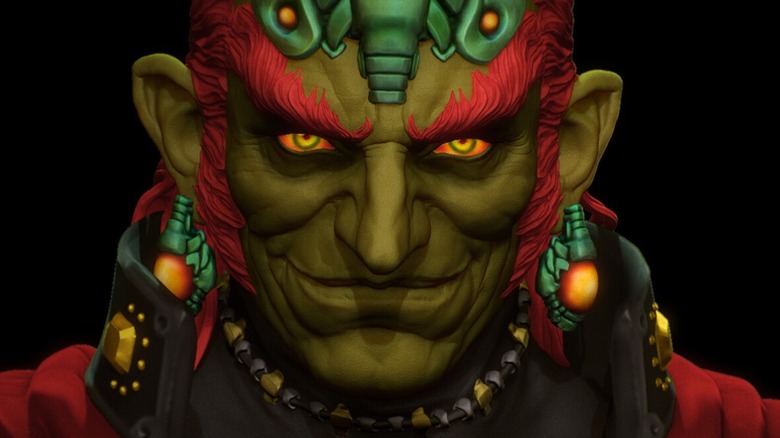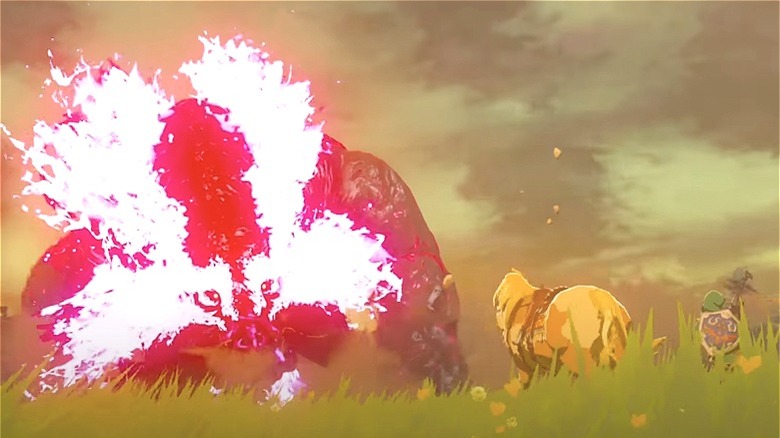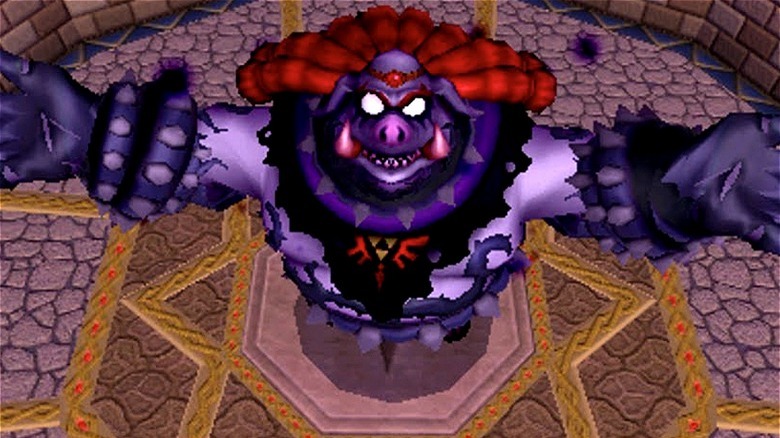The Difference Between Ganon And Ganondorf Explained
As far as video game villains go, Ganondorf has always oozed incredible power and malice — quite literally in the "The Legend of Zelda: Tears of the Kingdom" footage. The King of Evil, thieves, and Gerudo has long earned his distinction as an iconic gaming antagonist for these traits, alongside a calculated nature and ruthless disposition that ensures not even his own people are safe.
Contrasting the notoriety he has garnered for his accomplishments across the "Legend of Zelda" timeline, it has often proven confusing for fans to separate Gangondorf from his alter-ego: the dark beast, Ganon. This brutish form has appeared more often in "Zelda" games than his humanoid counterpart, although NPCs like the King of Red Lions from "The Wind Waker" have referred to the man as Ganon. So, is Ganon a nickname for Ganondorf, more of a pseudonym, or a different person altogether?
The two have a more complicated relationship than newcomers to the "Zelda" series may initially recognize, and the distinction between them has diluted over the course of 20 or so mainline "Zelda" games. Fortunately, the developers have mostly arrived at a consensus on their degrees of separation. Ganondorf and Ganon share the same spirit, though not always at the same time.
A shape-shifting descendant of Demise
The ending of "The Legend of Zelda: Skyward Sword" introduced fans to the origin of both Ganondorf and Ganon. As the first canonical game in the "Zelda" timeline, the demon Demise set the stage for all main antagonists to follow, cursing the hero and Zelda with a never-ending cycle where incarnations of his hatred will hunt down their descendants. Enter Ganon and Ganondorf: both qualify as incarnations of this same malevolent entity, sometimes describing the same individual.
"The Legend of Zelda: Hyrule Historia" recounts multiple instances in the series where "Ganon" simply serves as a nickname for "Ganondorf" in his beast form. The collector's book attributes this description to "Ocarina of Time" Ganondorf, but the same rule applies to "Twilight Princess" Ganondorf: the same incarnation. It also carries over to other incarnations of the King of Evil. Hyrule Historia confirms that Ganondorf plays an active role in the background of "Four Swords Adventures" before transforming into the trident-wielding Ganon for the final showdown. In short, the names Ganon and Ganondorf refer to the same person in those games, just in different forms.
They can also exist separately
Ganon the beast appears in "Zelda" games where Ganondorf the man holds zero presence. Nintendo makes no mention of the King of Thieves in the first two "Zelda" titles but name-drops him in the manual for "A Link to the Past." Only Ganon exists in the canon of those entries, and they call him by that name alone.
In another instance, 2013's "A Link Between Worlds" sees players chase down Yuga as the main antagonist. Similar to Aghanim in "A Link to the Past," Yuga uses his dark magic to summon Ganon into Hyrule. But unlike Aghanim, Yuga takes it a step further and merges with the beast. This time, neither the manual nor the game makes any mention of Ganondorf. Yuga takes his place as the human counterpart to Ganon, demonstrating that the demon pig can exist separately from Ganondorf.
Ganondorf and Ganon are sometimes but not always the same individual. Both house the spirit of Demise, but Ganon's appearance in a "Zelda" game does not always translate to Ganondorf, the man, showing up. Some fans have argued that the "Zelda" team has not given high-enough priority to the continuity between its installments, which may explain the confusing relationship between the two.
In any case, both versions of the character have grown beloved enough to warrant a future "Zelda" game subtitled after them: perhaps borrowing from one of the many different names brainstormed for "A Link to the Past."



